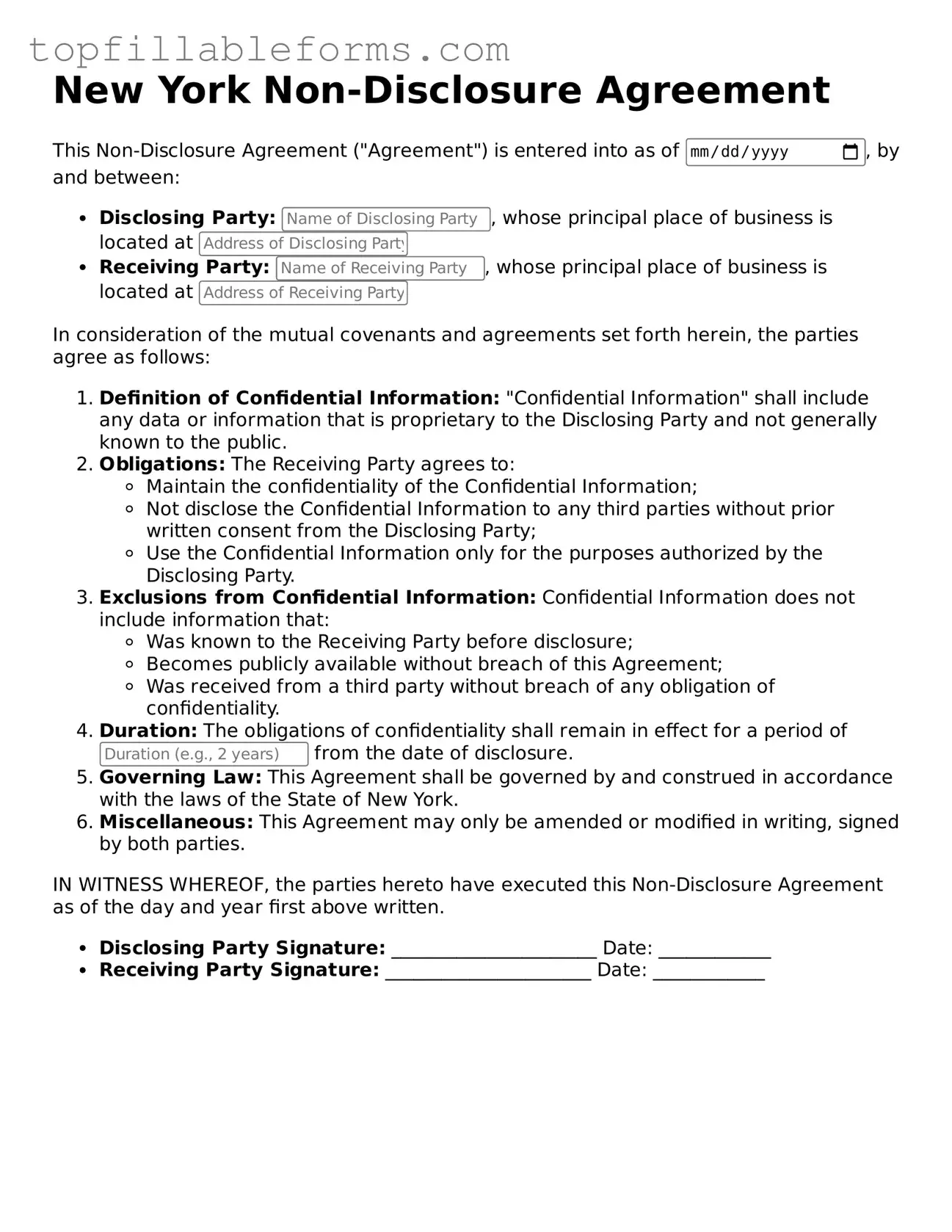Attorney-Verified Non-disclosure Agreement Template for New York
A New York Non-disclosure Agreement (NDA) is a legal contract designed to protect sensitive information shared between parties. This agreement ensures that confidential details remain private and are not disclosed to unauthorized individuals. Understanding the nuances of this form is crucial for anyone looking to safeguard their business interests in New York.
Open Non-disclosure Agreement Editor Here
